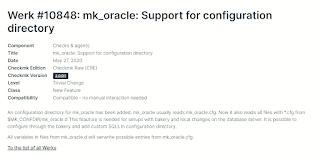Updating Systems by Parts
One of the
biggest problems about systems update is the offline system time for the end
user. Mostly when the actions and changes are in the Database. As big is the
amount of data and size of the database, as long it will take your system
offline.
Was that
necessity in decrease this time that a company for which I do database
consulting, brought me. I had the need to imagine an update strategy in their
systems in a way that the end user would stay less time as possible with
offline system, or at least, with a minimum of impact in the customer
operation.
The major
trouble about it is to fit the software version with its correspondent database
structure. Of course, when this update leads to a database structure change, as
table creation, columns, etc. In a hot update, with users using the system, you
can even get the database modifications, depending on the database, but there
will be a moment, in some parts of the system, that might occur errors due the difference
of database structure on the tables.
Was thinking
about it that I suggested a modification in their update release process of
database scripts and programs. Even their data structure didn't have been made
in a modular way, at the beginning, I thought on a way tot ry to modularize its
update, affecting only some company areas at time. In that way their customer
IT team would also prepare and schedule their system update by areas.
For
example, if the company has a reception area, products supply, billing and a
research & development area, they can plan system using by areas, according
to the timestamp that will less impact the area. As update the reception
software in the time which their have less activity in that area, or the supply
software in that time where they less do products movement, etc.
The process
in its general way is quite simple. There will be an initial request for
update. In this request the company will also prepare the database scripts,
documentation and correspondent software version. Then there's come the main
process. Those database scripts will have to be prepared according to the
programs that uses that specific database tables. There will exists a group of
core tables, which are common to most of the programs. Surrounding those core
tables there will be the specific tables used by each program. As for example
the supply program must have tables which are used just for this part of the
program, and so on. The process output will be the update logs and the updated
product (software and database structure).
We had a pilot
with this new process into one of their customer and, instead of some small
problems and adjustments, everything gone well and we had a nice feedback from
this customer. Now is keep the process running and maturing for the next
updates and releases. And my work here is done!



Comentários
Postar um comentário